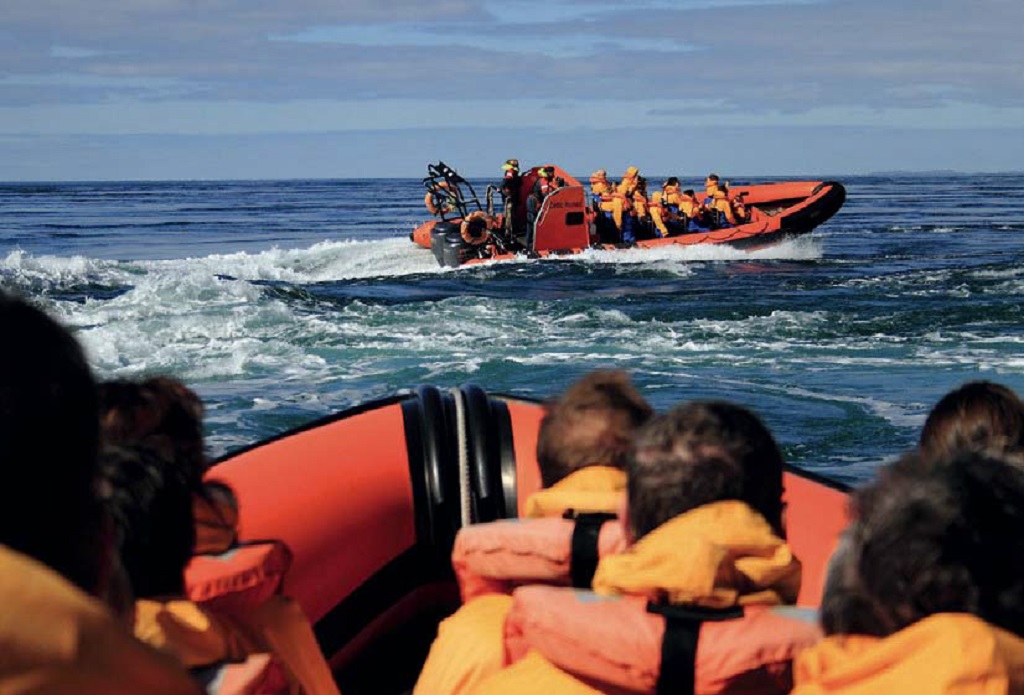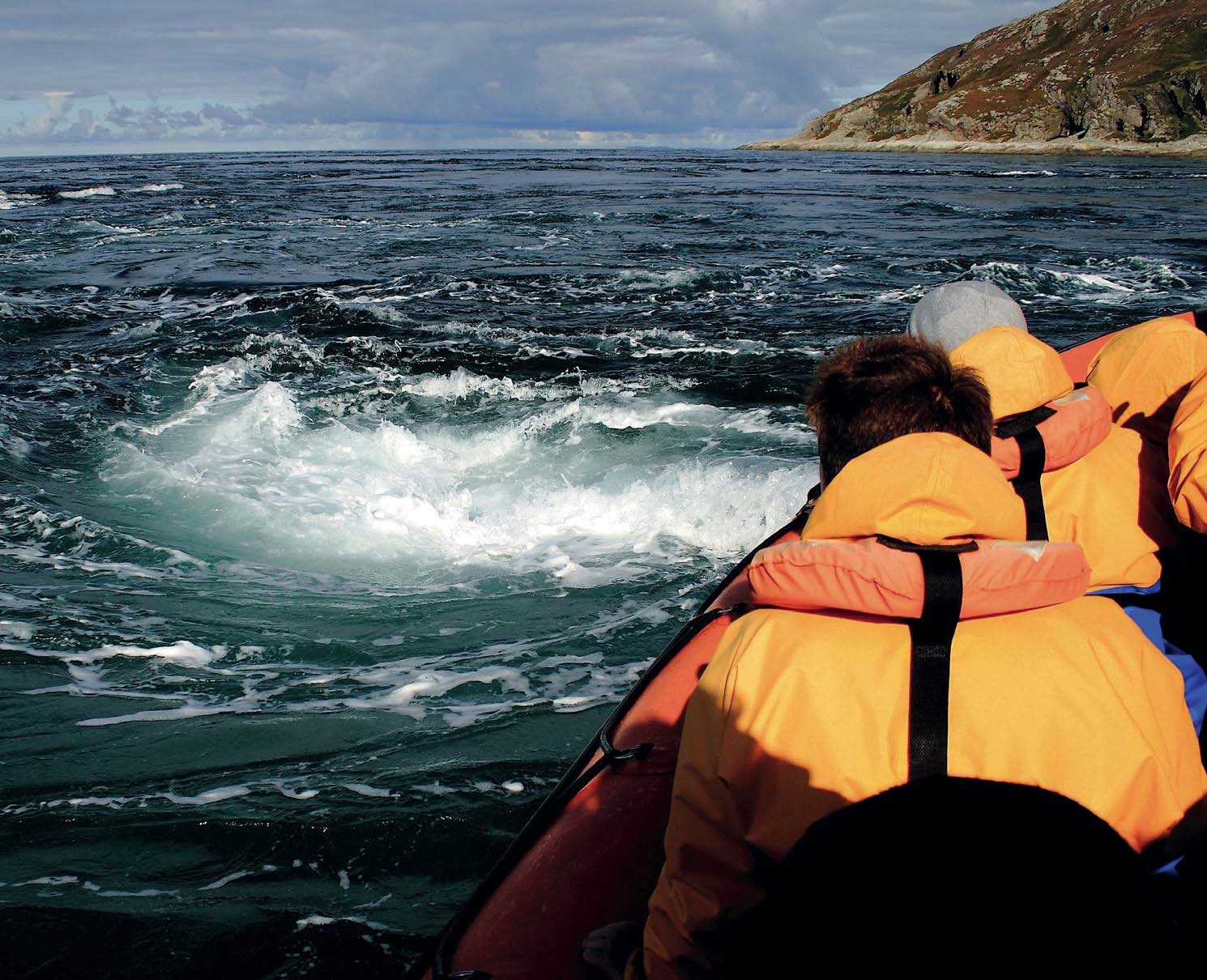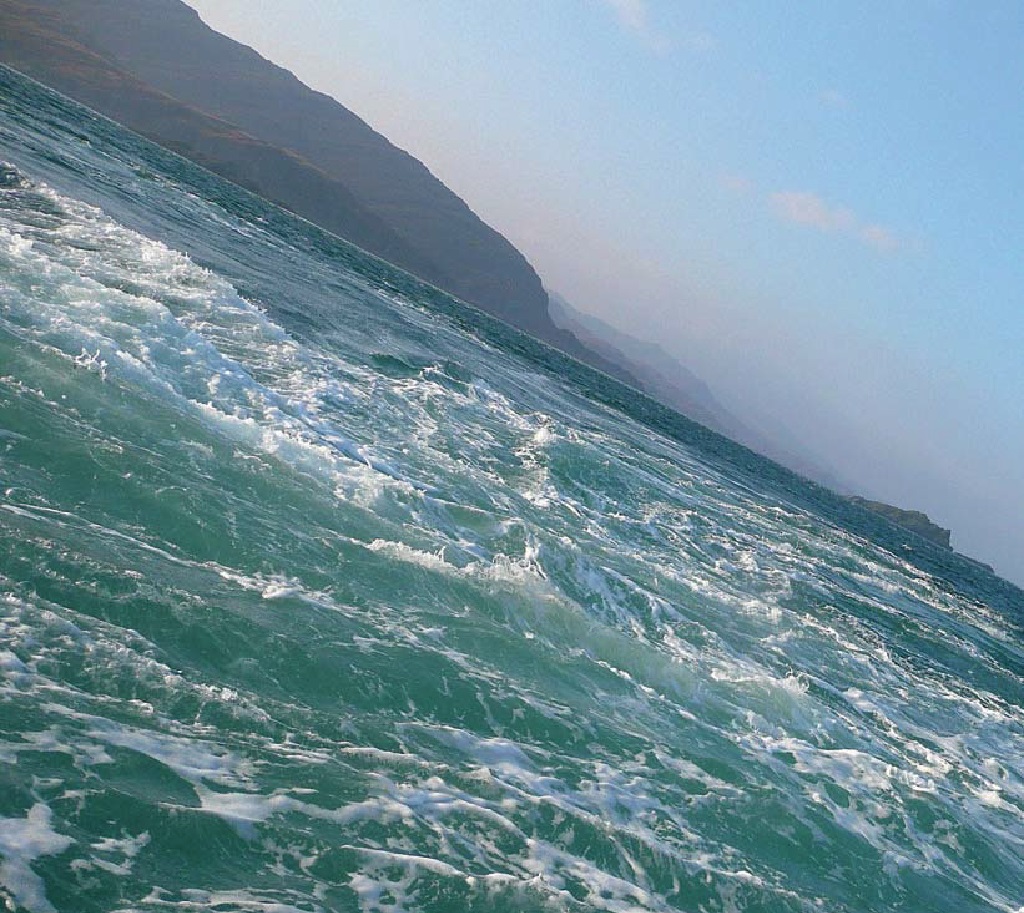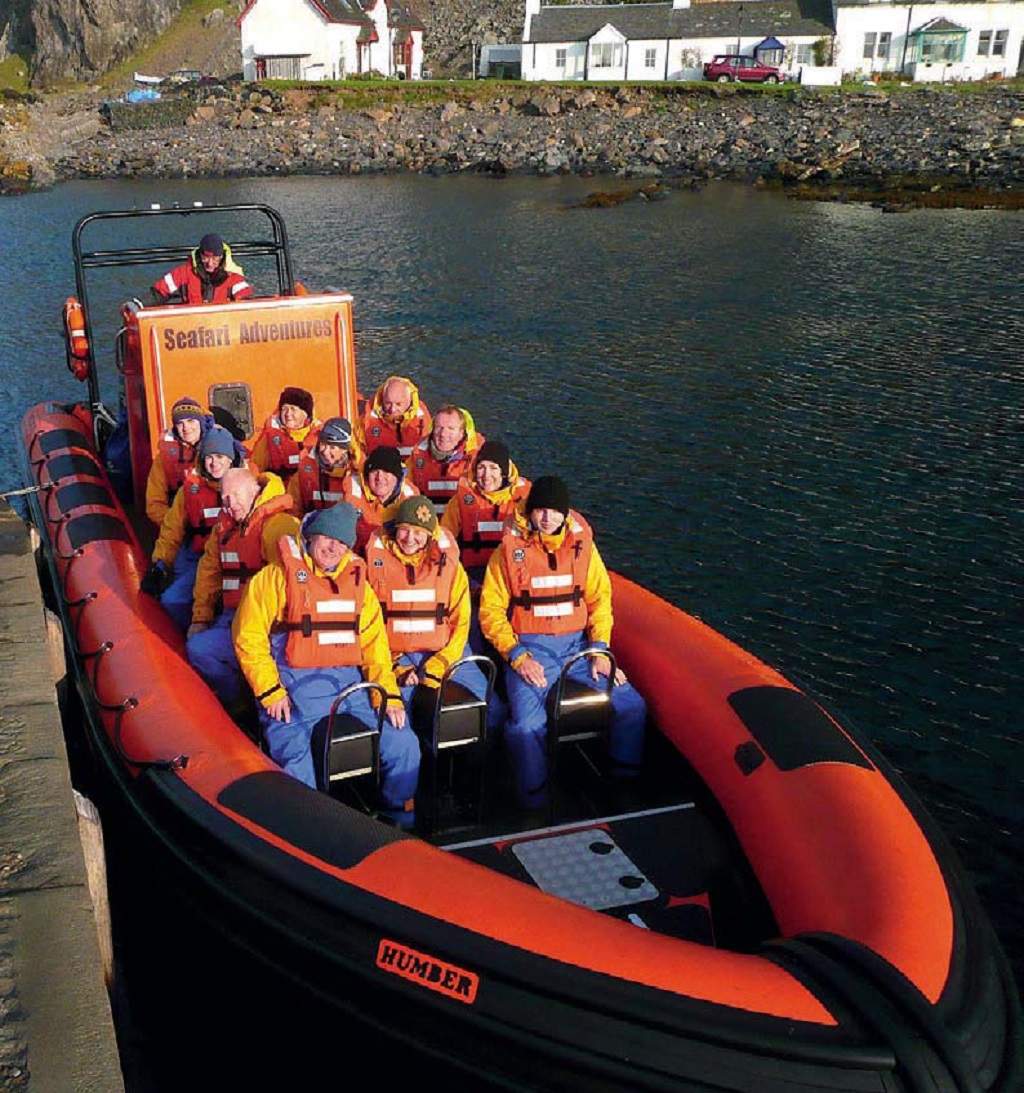
Meeting the maelstrom that is Corryvreckan
The Corryvreckan whirlpool is the world’s third largest and its massive tidal upswellings and boiling waters make for a memorable experience.
The dictionary gives the meaning of the word ‘maelstrom’ as a confused, disorientated state of affair; an irresistably overpowering influence for destruction.
It is a description that suits the Coire Bhreacain – translated from the Gaelic as the Cauldron of the Speckled Seas and better known as the Corryvreckan Whirlpool. It is situated between the islands of Jura and Scarba, where its extremely unusual underwater topography and rock ridges, including a pinnacle called the Hag, have created the world’s third largest whirlpool. As fast flowing tides hit this pinnacle they cause massive upwellings, causing the water to churn capriciously like a vast boiling vat, a froth-filled cauldron of erratic and volatile activity. Depending on the weather, standing waves are sometimes produced, some as much as 15 feet high.
The whirlpool is also renowned for its folklore, in particular the tale of the Hag goddess, Cailleach Bheur, who is said to use the gulf to wash her long trailing plait and usher in the change from autumn to winter. As winter approaches, she then uses the water as a washtub and the sound of the roaring turbulence can be heard up to ten miles away.

The whirlpool is popular with tourists
Modern-day Hans Christian Andersons spin misleading information and inaccurate statistics about Corryvreckan. It is frequently recorded that the tide race may be up to 16 knots but the fastest it has been recorded is 8½ knots. Scotland has many impressive tidal currents, not least of all those of the Pentland Firth between Orkney and the mainland, where the tide can indeed run at 16 knots.
Although the Royal Navy once classified the Gulf of Corryvreckan as ‘unnavigable’ – there are tales of countless ships being sucked into the whirlpool’s vortex – there are few, if any, records of this. However, there have been plenty of near misses, with harrowing tales of yachts spinning like out-of-control tops. Even following tide tables is no guarantee of safe passage, because there are so many variables, with winds and barometric pressure playing a huge role in the nature of this fascinating stretch of water. Ultimately, nothing beats local knowledge and experience when dicing with Corryvreckan.
During his time on Jura, George Orwell and his family almost came to grief in a small boat on the whirlpool, while in 1949 Orwell’s brother-in-law, Bill Dunn, was the first man to swim across the Gulf of Corryvreckan. He did so to celebrate the publication of Orwell’s book, 1984. Smeared in sheep fat and hampered by the loss of a leg during the war, Dunn raised a large amount of money for the Erskine Hospital.
Others have made the swim since, but many of these thrill-seekers, extreme sportsmen and kayakers continue to provide health and safety nightmares for the local authorities and coastguards, who are of the opinion that the Corryvreckan demands ultimate respect.

The whirlpool is exhilarating, almost hypnotic
With the threat of serious cutbacks to rescue services, foolhardy adrenaline junkies of the future may find they are at even greater risk. Corryvreckan is viewed as one of the most dangerous diving areas in Britain. A weighted dummy wearing a life jacket and dive meter was thrown into the water close to Corryvreckan and was eventually found several miles out to sea.
The dummy had been sucked down an astonishing 200 metres into the abyss and there was gravel in the pockets of its life jacket, which had been severely torn. However, if dived responsibly, Corryvrekan is not only challenging but rewarding, for the waters here are rich with marine life.
Recently, several skilled and experienced boat operators have opened up a new area of marine tourism and take parties out to experience the thrills of the whirlpools, like award-winning Seafari Adventures, operating from Oban.
The company, started by Tony Hill, was the first to take people out to watch wildlife from rigid inflatable boats (aka RIBs), with a top speed of 44 knots and with special seats designed for comfort and safety. They also fit out Humber RIBs for private and commercial boat operators, and doing sea trials on almost a daily basis means that Tony Hill and his team are in prime position to tailor boats for Scottish waters.

Standing waves can be produced
It is during the extra-high Spring tides that Corryvreckan’s action is at its greatest. Then the sea roars through the mile-wide channel; and if it coincides with strong westerly winds there is even greater drama. This usually occurs for around 20 days each year during February, March, April, August, September and October (it was a glorious October morning when we experienced one of Scotland’s finest attractions).
We had been staying in Argyll with a party of close friends to celebrate a milestone birthday, and although we had a bit of trouble rallying the troops at the crack of dawn, we all made it to the harbour. Tides wait for no man, and latecomers miss the boat, so there was a flurry of madness as we piled into Seafaris’ waterproofs and lifejackets. Soft light painted the Garvellachs with a rosy hue as the RIB sped out into open water from the picturesque slate village of Easdale.
Any vestige of a hangover blew away in seconds as the boat cut effortlessly through the water and a salty sea tang filled the lungs.
There were gasps of excitement as the skipper jinked like a snipe leaving a bog before steering straight again. Everyone was now wide awake. The sun rose higher in the sky like a pink grapefruit, and wild goats and fallow deer on the island of Scarba stood in silhouette on the crags as we sped by. Seafari’s guide explained the workings of the tides and what we could expect, and pointed out Little Corryvreckan, which is another area of exceptionally strong tidal activity at the Grey Dogs.
Through the binoculars, Jura’s great sea cliffs looked impressive, especially as a pair of golden eagles drifted lazily overhead. The water was calm, almost ethereal, tinged with early rays of light. Our guide explained that as the tide turns the water builds up and plates begin to form.
And then it began, slowly at first but quickly mounting to a massive crescendo. While I had expected one large whirlpool, there were gaping holes all round us and I noticed that though the engine was running hard, there was still the same billy goat standing on the same rock on the shore, and we had still not passed him. We continued to hold our position for a long time.

The Seafari Advenures RIB
The sea became a mass of extraordinary pits and troughs, rising and falling like a roller coaster. Upwellings, boilings, and currents were swirling frothily round us, the water a soft opaque green like a Fox’s glacier mint.
We watched spellbound and overwhelmed as the skipper literally played with the action, taking the boat right into the maelstrom. Exhilarating, fascinating, and almost hypnotic, it went on and on before gradually slowing as the pools became less frenetic, waltzing away gently into the distance.
We had experienced one of the most incredible marine activities in the world and continued back to Easdale in time to witness the tail end of the activity at the Grey Dogs.
I was high for days and struck by the fact that you can travel all over the world but often nature can surprise you much closer to home.
For more information visit www.seafari.co.uk/oban
(This feature was originally published in 2011)
TAGS

